 Your new post is loading...

|
Scooped by
Pôle Veille AgroParisTech
September 9, 5:37 AM
|
Veille IPCI : Ingénierie de Produits à l'interface Cuisine-industrie

|
Scooped by
Pôle Veille AgroParisTech
Today, 4:06 AM
|
3D food printing technology has revolutionized the functional food sector by precisely controlling texture and nutrients. It enables personalized nutrition for specific populations (e.g., patients with swallowing disorders, diabetics, children) and enhances bioavailability of functional ingredients like probiotics.

|
Scooped by
Pôle Veille AgroParisTech
December 1, 8:13 AM
|
Insights, market reports and data on: - How AI and Metabolomics are Discovering New Almond Bioactives - The Art of Snacking: Unlocking Almond Versatility for Feel-Good Snacking - Three Trends for Almonds in 2025

|
Scooped by
Pôle Veille AgroParisTech
December 1, 8:04 AM
|
Pumpkin seed proteins are underutilized plant proteins with a balanced content of essential amino acids and health benefits. Benefit from the functional properties and low-cost character, pumpkin seed proteins exhibit great potential for applications as alternative food ingredients. This paper reviews the composition of pumpkin seed proteins, as well as the extraction methods, including the alkaline method, ultrasonic-assisted method, and enzymatic-assisted approach. Functional properties of pumpkin seed proteins, such as solubility, foamability, gelling, and emulsification, are described. Additionally, several modification methods were emphasized to enhance the functionality of pumpkin seed proteins, including physical, chemical, enzymatic, and combined approaches. Food applications of pumpkin seed proteins, including food packaging films, meat analogs, carriers, protein supplements, and functional food additives, are also systematically introduced. Finally, the challenges and solutions that limit the widespread utilization of pumpkin seed proteins are discussed.

|
Scooped by
Pôle Veille AgroParisTech
December 1, 7:58 AM
|
Precision fermentation is emerging as an innovative platform for manufacturing high-value food proteins, relocating food production from agricultural fields to controlled bioreactors. This perspective will address modifications to the secretory pathway that can improve protein secretion efficiency. Deliberate, data-driven engineering of secretion efficiency will determine whether precision-fermented proteins advance from pilot production to routine industrial manufacture. This perspective will also address the issues of cost efficiency and scalability, exploring how protein secretion can overcome these challenges to make lab-grown food a sustainable, ethical, and viable alternative to conventional food sources.

|
Scooped by
Pôle Veille AgroParisTech
November 26, 9:05 AM
|
Gelatin-based scaffolds with excellent physical and biological properties provide sufficient mechanical support and create biomimetic environments, closely mimicking natural tissues. This makes them suitable for designing high-quality cultured meat. By addressing future challenges and promoting advanced technologies, the full potential of gelatin-based biomaterials can be realized and propelled to the forefront of innovative applications in cellular agriculture.

|
Scooped by
Pôle Veille AgroParisTech
November 26, 8:51 AM
|
Hydrogen-oxidising bacteria (HOBs) convert CO2, hydrogen (H2), and potentially nitrogen (N2) into biomass via gas fermentation, promising to decouple food production from agriculture.
Industrial-scale gas fermentation has been shown to be feasible across a variety of microbial species and gases.
The development of engineered microbial strains for the precision fermentation of novel foods gains momentum due to maturing synthetic biology tools, pressing environmental concerns, and a consequential shift in consumer preferences.
Combining industrial-scale gas fermentation capabilities with state-of-the-art precision fermentation technologies enables the development of gas precision fermentation processes.
Product development and commercialisation would greatly benefit from focused generation of HOB tools and improved gas fermentation capacities in academia and industry.

|
Scooped by
Pôle Veille AgroParisTech
November 26, 8:31 AM
|
Join IFT experts on December 10 for this free webinar, sponsored by CoDeveloper , exploring how new technologies are helping scientists formulate new functional foods that also exceed customer expectations.

|
Scooped by
Pôle Veille AgroParisTech
November 17, 5:35 AM
|
Depuis quelques années, le mot superaliment s’est imposé dans les rayons et dans les discours autour de la santé et du bien-être. Mais que cache vraiment cette appellation ?

|
Scooped by
Pôle Veille AgroParisTech
November 17, 5:30 AM
|
- Postbiotics offer gut and immune benefits with shelf-stable versatility
- Functional mushrooms gain traction in drinks and mental health formats
- GABA supports sleep and stress in trending wellness drink categories
- Magnesium in beverages targets sleep with growing mainstream interest
- Colostrum powders move from niche supplements to immune food formats

|
Scooped by
Pôle Veille AgroParisTech
November 17, 5:18 AM
|
Highlights
• Alginate oligosaccharides offer multifunctional roles in the food industry.
• They enhance gut health through prebiotic and microbiota-modulating effects.
• Bioactivities include antioxidant, antimicrobial, and anti-inflammatory actions.
• Applications span functional foods, nutraceuticals, and food preservation.
• Potential use in edible coatings and packaging supports food sustainability.

|
Scooped by
Pôle Veille AgroParisTech
November 12, 10:03 AM
|
As the plant-based sector continues to evolve, clarity and compliance in labeling and terminology will be essential for building consumer trust and mitigating legal risk.

|
Scooped by
Pôle Veille AgroParisTech
November 12, 10:01 AM
|
Scientists in China have developed a “soft and flexible” artificial tongue that can detect the heat level in spicy foods, and support or reduce reliance on human taste panels. The device can detect capsaicin and pungent-flavored compounds found in garlic, ginger, and black pepper, which could streamline spiciness testing in F&B development.
|

|
Scooped by
Pôle Veille AgroParisTech
Today, 4:15 AM
|
Umami is crucial for enhancing food palatability, modulating appetite, and preventing obesity. Edible fungi, as nutrient-rich and sustainable food sources, are particularly abundant in umami (enhanced) substances, including monosodium glutamate (MSG), umami amino acids, 5′-nucleotides, peptides, and their derivatives. This review systematically summarizes their molecular structures, sensory properties, and structure–function relationships, emphasizing how processing, storage, and intrinsic factors affect their stability, activity, and synergy.

|
Scooped by
Pôle Veille AgroParisTech
December 1, 8:17 AM
|
L'IFIP (Institut du porc) annonce que son Guide des Bonnes Pratiques de Fabrication (GBPF) version 2025 est disponible

|
Scooped by
Pôle Veille AgroParisTech
December 1, 8:08 AM
|
Highlights
• Phytochemicals face low solubility and stability in functional food systems.
• Nanotechnology enhances phytochemical stability and bioavailability in food.
• Nanoemulsions improve solubility, rapid uptake, and shelf life of compounds.
• Electrospun nanofibers offer high loading and sustained nutrient release.

|
Scooped by
Pôle Veille AgroParisTech
December 1, 8:02 AM
|
Pigmented cereals such as black rice, purple wheat, blue and black maize, red corn, and red sorghum have emerged as promising contributors to nutrition-sensitive food systems because their bran tissues are rich in anthocyanins, flavonoids, phenolic acids, and carotenoids that support cardiovascular, metabolic, and cognitive health.
When a group of Cornell food science students gathered in a classroom to brainstorm product ideas for the 2025 IFTSA (IFT Student Association) & Mars Product Development Competition, they didn’t start with spreadsheets or sensory data. They started with cravings.

|
Scooped by
Pôle Veille AgroParisTech
November 26, 8:57 AM
|
A visually oriented overview of plant-based protein ingredient trends.

|
Scooped by
Pôle Veille AgroParisTech
November 26, 8:44 AM
|
This review article explores the roles of bacteria, yeasts, and molds in food applications. By bridging traditional fermentation knowledge with emerging biotechnological tools such as precision fermentation and strain engineering, this work provides a framework for designing natural, sustainable, and reproducible flavor systems for next-generation food innovation.

|
Scooped by
Pôle Veille AgroParisTech
November 18, 9:36 AM
|
Des chercheurs ont utilisé des accélérateurs de particules pour percer les secrets de la cuisson parfaite des pâtes. Leurs expériences révèlent le rôle crucial du gluten, du sel et du temps de cuisson dans la structure des spaghettis.

|
Scooped by
Pôle Veille AgroParisTech
November 17, 5:33 AM
|
The demand for biostabilization and preservation of bioactive peptides, cell culture, and other functional ingredients has grown dramatically due to increase in popularity of functional food, nutraceuticals, and other healthy dietary supplements. EHD preservation through drying, encapsulation, and immobilization are gaining attention due to their compatibility and sustainability. The EHD method is turning out to be a new-generation solution for preserving and biostabilizing bioactives and thus increasing their stability.

|
Scooped by
Pôle Veille AgroParisTech
November 17, 5:22 AM
|
The pursuit of sustainable and health-promoting food resources is a pressing global challenge under the pressures of population growth and resource scarcity. This review aims to provide a sustainable-development perspective on natural microalgae resources by bridging their systemic health benefits with their emerging applications in the modern food industry.

|
Scooped by
Pôle Veille AgroParisTech
November 13, 7:11 AM
|
This, H. (2025). Inventions culinaires, gastronomie moléculaire. Odile Jacob. « Voici un livre de cuisine, pas de chimie : j’y propose des recettes, j’y parle de goût, d’ingrédients, de nouvelles manières de les associer, bref, il s’agit bien de cuisiner. La chimie ne sera “dans” la cuisine que par les connaissances qu’elle apporte, parce qu’elle permet de comprendre ce que l’on fait quand on cuisine, donc de mieux faire et d’apprécier encore davantage les beautés de l’art culinaire. »
Hervé This est ingénieur de recherche INRAE à l'UMR SayFood. Il a a été récompensé le 9 avril par le prix Sonning 2025.

|
Scooped by
Pôle Veille AgroParisTech
November 12, 10:02 AM
|
The growing consumer scrutiny of ingredient labels and push for transparency are driving manufacturers to replace or enhance traditional emulsifiers. From lecithin alternatives to exploring hybrid blends, key players in the sector are expanding emulsifiers’ versatility while ensuring their applications in confectionery, bakery, and dairy alternatives meet the evolving expectations of today’s conscious consumer.

|
Scooped by
Pôle Veille AgroParisTech
November 12, 9:53 AM
|
Electric field-based technologies are important tools in food ingredient engineering, enabling targeted modification of fiber hydration and water-holding capacity, starch gelatinization and retrogradation behavior, and protein solubility and emulsifying properties. PEF and HVED excel in non-thermal, structural disruption, OH and MEF promote uniform heating and conformational rearrangements, and all provide opportunities for designing novel ingredients with improved technological and nutritional attributes. As research advances, optimizing processing parameters and scaling up industrial applications will be crucial to fully harness their potential for the development of novel, sustainable food ingredients aligned with market and sustainability trends.
|




 Your new post is loading...
Your new post is loading...



![[IFT Webinar] Formulating Functional Food | IPCI : Ingénierie de Produits à l'interface Cuisine-Industrie | Scoop.it](https://img.scoop.it/i7SiJMaT7NaQ6dYl5iLxDDl72eJkfbmt4t8yenImKBVvK0kTmF0xjctABnaLJIm9)
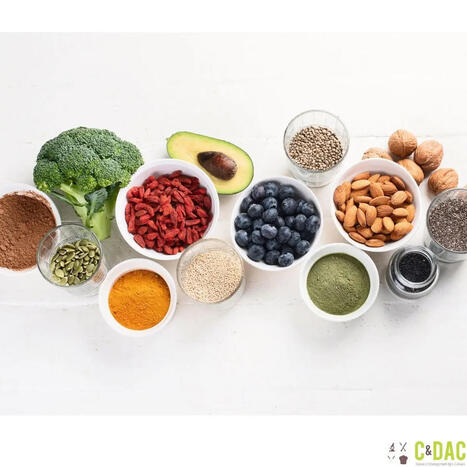

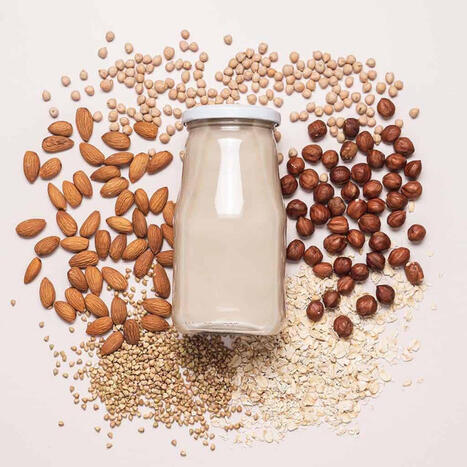

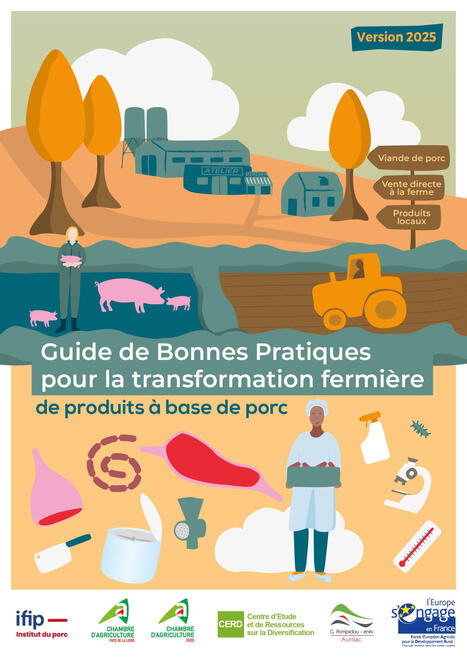


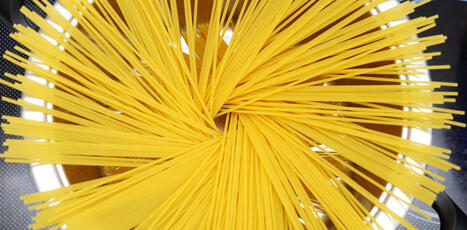
![EHD techniques for biostabilizing food and functional biomolecules: a comprehensive review [Journal of Food Measurement and Characterization] | IPCI : Ingénierie de Produits à l'interface Cuisine-Industrie | Scoop.it](https://img.scoop.it/M7Bwjf8ghDbHQ5vnMlsKkjl72eJkfbmt4t8yenImKBVvK0kTmF0xjctABnaLJIm9)
![Parution : Inventions culinaires, gastronomie moléculaire [UMR SayFood, INRAE] | IPCI : Ingénierie de Produits à l'interface Cuisine-Industrie | Scoop.it](https://img.scoop.it/2th6fQ-52Qxm9J6WyXZ_SDl72eJkfbmt4t8yenImKBVvK0kTmF0xjctABnaLJIm9)
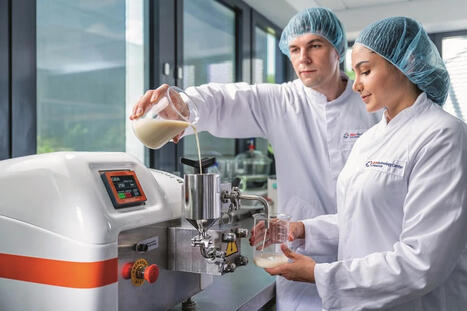





Retrouvez aussi d'autres veilles qui peuvent vous intéresser dans le domaine de l'Alimentation :